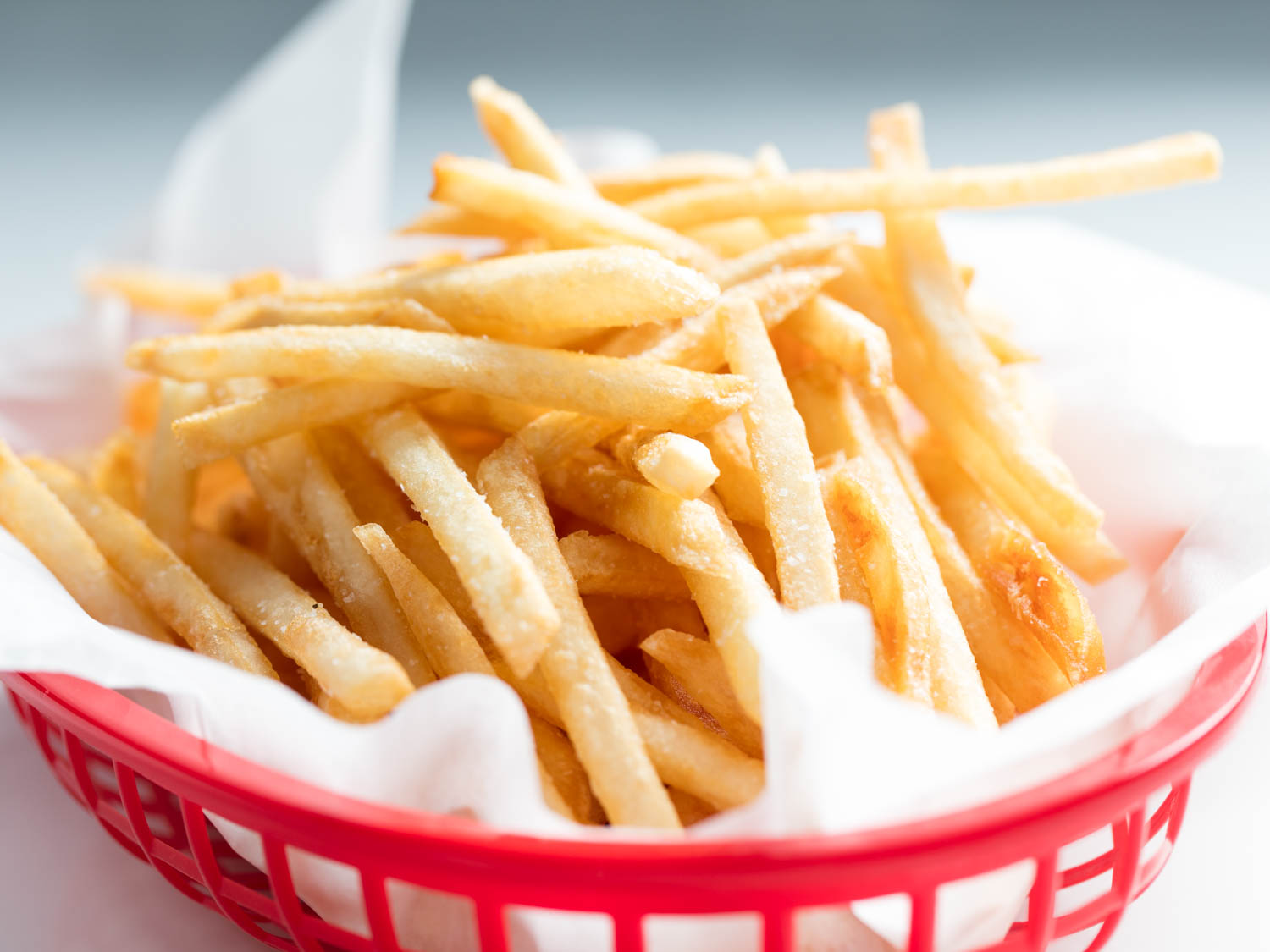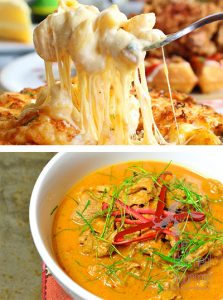
December 10, 2020
The COVID-19 pandemic has upended the daily lives of thousands of Borough of Manhattan Community College (BMCC/CUNY) students, faculty and staff. For many, the uncertainty surrounding the pandemic has led to feelings of fear, depression and anxiety, which among many other things, can impact a person’s eating habits.

“Strong emotional states make us turn to comfort food to feel safe and in control,” said Health Education Department Chairperson Lesley Rennis. “Comfort foods not only taste good, they actually lessen the impact of stress hormones.”
Eating sweet and starchy food helps our bodies make serotonin which makes us feel calmer, and decrease the stress hormone cortisol, explains Rennis. A number of studies show that people feel less depressed, anxious and irritable after consuming carbohydrate-rich foods. She says fatty foods like bacon and cheese, actually have a numbing effect, that helps decrease the emotional response to stress.
“Not coincidentally, some of the country’s most beloved comfort food products, like Kraft macaroni and cheese, were born in response to consumer needs during hard times like the Great Depression,” said Rennis. “With COVID, we’ve seen a spike in the consumption of favorites such as pizza, hamburgers, French fries and yes, macaroni and cheese.”

A September poll in a food industry trade publication found that two out of three Americans said they had reverted to eating more comfort food since the start of the COVID-19 pandemic. Another poll of Web MD readers reported that nearly half of the women and almost one-quarter of the men surveyed said they’d gained weight “due to COVID restrictions.”
Some foods have nostalgic value
Health Education Professor Jason Bravo says when we are upset or stressed, we also sometimes choose foods that are familiar or remind us of our childhood.
“They may remind us of a parent or caregiver’s love, and that memory is strongly tied to a shared food experience from childhood,” said Bravo. “It could be a meal your mom cooked or it could be the flavor of our favorite ice cream cone from childhood summers.”
 Comfort foods run the gamut from meatloaf and cheese quesadillas to a rich bowl of Panang curry, says Bravo. They reflect our cultural cuisines and usually make us think of home. The most common thread is that they remind us of how protected and secure we may have felt in childhood, he says.
Comfort foods run the gamut from meatloaf and cheese quesadillas to a rich bowl of Panang curry, says Bravo. They reflect our cultural cuisines and usually make us think of home. The most common thread is that they remind us of how protected and secure we may have felt in childhood, he says.
“Consuming these comfort foods is an unconscious attempt by us to actively moderate our mood and to alleviate negative feelings like those many of us are experiencing during this pandemic.”
Pre prepare protein rich, healthy, readily available salads at the start of your day
Health Education Professor Gloria McNamara, a New York State registered Nutritionist and Dietician, says our brains and body are seeking out the good feelings that comfort foods provide. But there are ways to re-train the mind and eating patterns.
McNamara says almost all comfort foods are primarily composed of fats and carbohydrates. There usually isn’t a proportional amount of protein, vitamins, minerals or phytochemicals (plant-based nutrients) in these types of food. It’s just the way they are made.
“When consuming food, we want to ingest ‘meals,’ which, by my personal definition are balanced servings of protein, carbs, fat, vitamins, minerals and phytochemicals washed down with a tall glass of tepid water,” said McNamara. “To avoid imbalance and circumvent human nature, begin your meals by consuming the vitamins, minerals, phytochemicals and protein.”
So, how do you do this in an easy, nutritious and affordable way?
“You build in convenience to offset the urgency of cravings when they come. Early in your day —before any cravings set in—prepare a salad to consume later,” said McNamara. “I would include the protein in the salad, so you get everything that the comfort food does not provide. I had my nieces and nephews eating a small salad quickly before diving into their true comfort cravings for each of their afternoon and evening meals. It took them all of five minutes to consume this and bring some balance to their meals.”
McNamara says the salad will not only deliver vitamins, minerals, phytochemicals and protein, but also water. The water and the fiber in the salad will be somewhat filling, limiting the volume of comfort foods a person might eat.
“This is the simplest, most key take-away to me,” said McNamara. “Keep prepped salads on hand in the refrigerator for when the cravings hit. And keep in mind, salads are generally available when ordering take-out.”
With that said, McNamara does not think we should deny ourselves comfort food cravings altogether. Instead, she says portion control is one of the best forms of dietary discipline. Having a small portion, so you’ve satisfied the craving is critical.
“Oftentimes, feeling as though you’re depriving yourself will make you more miserable, “ said McNamara. “Allowing yourself to have these foods, without them constituting a breach of meal-plan protocol, can be helpful. Just be sure to control the amounts.”
Other healthy alternatives that can also be comforting
Professor Rennis says that although we may not be able to do anything about what’s causing the stress in our lives brought on by the pandemic, we can control the impact of stress on our diets.
“Focus on complex carbohydrates that are minimally processed and high fiber carbohydrates that take a longer time to digest and prevent blood sugar fluctuations,” said Rennis. “Better carbohydrate choices include root vegetables such as sweet potatoes and turnips as well as legumes like lentils and chickpeas.”
Professor Bravo concurs, adding that it helps to prepare your favorite foods at home with ingredients from scratch. That way, you are guaranteed to have less sugar, salt, and fat as well as preservatives.
“If our comfort food is pasta, we can choose a whole grain noodle,” said Bravo. “ If we’re making a stew, we can use fresh vegetables instead of frozen or canned versions. Consider laying the stew on a bed of wild or brown rice instead of white.”
Bravo says barley or quinoa can also add an interesting flavor and texture to any dish. And for a creamy base, try using evaporated skim milk to get the thicker consistency without the added fat.
“Eat sherbet or sorbet instead of ice cream; it gives the taste buds the same smooth sensation,” said Bravo. “Switch out the sugary desserts for the sweetness of fresh fruit and berries. Enjoy the pleasure of dark chocolate, which provides a healthy dose of antioxidants, instead of milk chocolate.”
The antioxidants in dark chocolate are shown to reduce inflammation and heart health.
“During these unprecedented times, take comfort in sharing recipes,” said Bravo. “These bonds will undoubtedly ease some of the pain we are feeling and minimize the isolation imposed by our current restrictions.”
This article is included with resources on the BMCC Resilience, Health and Wellness website, which provides inspiration and support for students, faculty and staff navigating life in the age of COVID.
For information about food assistance programs including the BMCC Panther Pantry and SNAP, click here.
Also see: Finding a Healthy Balance Between Nutrition and College Life
Healthy, affordable and easy to prepare meals from Eating Well
- Anxiety and stress can impact our eating habits
- Sweet, starchy and carb-rich foods decrease stress hormone cortisol
- NYS Nutritionist Professor McNamara says pre-prepare healthy convenient meals to offset cravings

